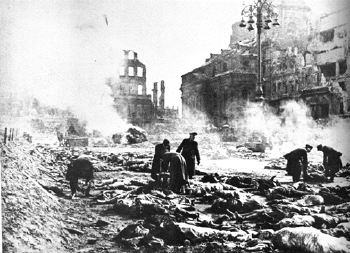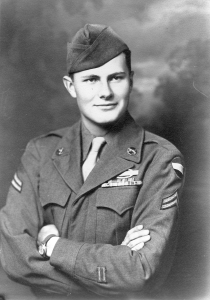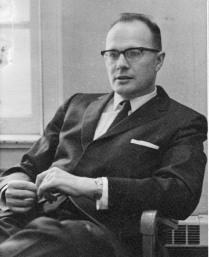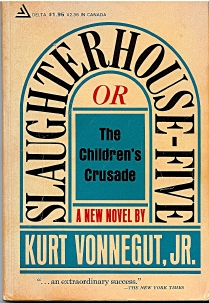PEOPLE
Recalling the origins of 'Slaughterhouse-Five'

Dresden, Germany, in ruins after the bombings. See larger image
World War II's Battle of the Bulge, the Dresden firebombing, imprisonment in Slaughterhouse Five – Gifford Doxsee '48 survived them all. A religious man, he attributes this good fortune to the power of his mother's prayers.
Five days after Doxsee's division was deployed at the European front, the Germans launched the Battle of the Bulge. They surrounded Doxsee's regiment the first morning. Ordered by radio "to dig in on all sides and hold off the Germans to the last man, if need be," Doxsee's unit persevered for three long, bloody days. Finally their commander surrendered. Doxsee, 86, recalls Dec. 19, 1944, as "the darkest day of my entire life."
The captured troops were marched east past Germans moving toward the front, and Doxsee got a firsthand view of what he feels is the greatest reason for the Allied victory: Germany's lack of fuel. Most of the German vehicles on the road that night were horse-drawn, he recalls, "and those vehicles that were motorized were emitting the most noxious and strange odors because of the ersatz fuel being burned."

Gifford Doxsee's 1944 Army photo. See larger image
Doxsee was imprisoned in Slaughterhouse Five, along with novelist Kurt Vonnegut (who spent three years at Cornell before being drafted into the U.S. Army in 1943). At first Doxsee worked in a malt factory; after the bombing of Dresden, all the prisoners of war worked clearing rubble. By the end of the war, according to Doxsee, there were 11 million slave laborers manning the German economy, in a "Greater Germany" of no more than 80 million. "Without our muscles and constructive activity, the German economy would have ground to a halt much sooner than it did," Doxsee recalls.
Food was in short supply. At first the POWs were allowed to snatch bites of food they found as they worked. This leniency ended when a prisoner was shot for looting – stealing a teapot, according to Vonnegut's novel "Slaughterhouse-Five." Doxsee says the real prisoner was trying to sneak some beans back for dinner.

Doxsee as a history professor at Ohio University, where he taught from 1958 to 1994. See larger image
Near the war's end, the POWs were moved to a village where they were given no food at all. The men survived by eating grass and dandelion greens – and whatever the innkeeper's wife, Frau Hanni Hippe, could smuggle to them. Childless, she saw the soldiers as the sons she never had.
"She rose above the hatreds of the war to reach out to us as a guardian angel," says Doxsee. "That's a message that I think needs to be shared: In every society there are good people. You cannot categorize an entire society as evil."
Doxsee has lived that message; he has spent the past seven years volunteering weekly in a local prison. "It's very easy for most of us to stereotype people," says Doxsee, "but after you get to know these prisoners, you see them as unique individuals. They're like the rest of us except they've made mistakes."

Kurt Vonnegut Jr.'s "Slaughterhouse-Five" See larger image
After his honorable discharge in 1945, Doxsee attended Cornell. He lived in the Theta Delta Chi house, where half the residents were veterans, half recent high school graduates. Though only a few years separated the groups, "the veterans were men, and the others were boys," says Doxsee.
Cornell's lightweight crew proved a vital part of Doxsee's postwar recovery. Rowing restored his energy to what it had been before his capture in the war, though it took a full year. He recalls crew as a "remarkable group of people."
Doxsee received a Ph.D. from Harvard, where he grew interested in the breakup of the colonial empires after World War II. He wanted to understand firsthand the view of the colonized, so he found a job in Beirut, Lebanon, teaching history. "Those were three life-transforming years for me," he says, adding that his ability to teach both European and Middle Eastern history are what landed him a history professorship at Ohio University, where he taught from 1958 to 1994.